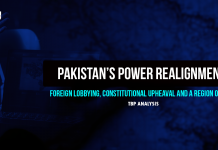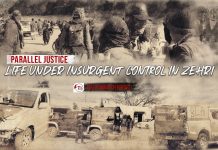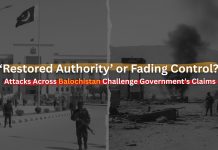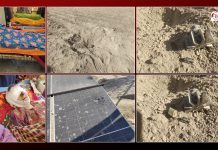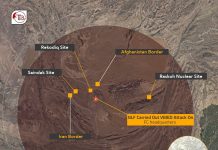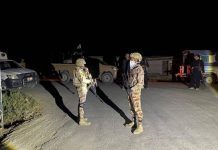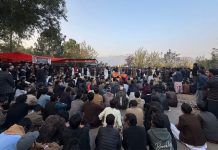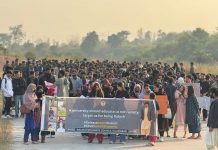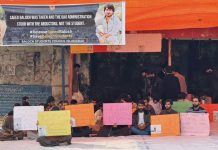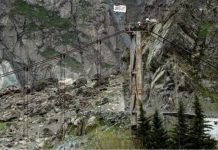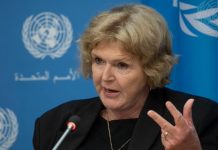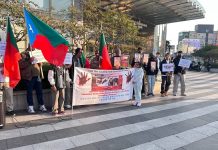28th May Tests, Balochistan is suffering from residual impacts
Shaad Baloch
The Balochistan Post
According to a report of strategic stability in the second nuclear age council released in 2014, Pakistan has the world’s fastest growing nuclear program capable of weaponing up to 200 nuclear devices by the year 2020. It has been also emphasized that the enough fissile material range of 110 and 120 nuclear warheads are some of the capabilities that Pakistan believed to have. All that Pakistan possesses today include the blood of Baloch.
This nuclear fissile buildup comes as part of an ongoing nuclear and missile arms race between Pakistan and neighboring India since 1998. On the eve of India’s growing conventional military capabilities, the size and composition of Pakistan’s nuclear forces appears increasingly dictated which brought a grim day for the inhabitants of Balochistan where Pakistan principally conducted its nuclear tests to became a participation of the arsenal race.
The influential Council on Foreign Relations (CFR) once stated that Asia is witnessing a nuclear buildup on a pace of regional rivalry with an existing opponent, despite of the facts that nuclear stockpiles are lessening in the rest of the world. After looking into the nuclear arsenals of Iran and North Korea, CFR reported that US military’s contingency planning to prevent Pakistani nuclear weapons from falling into the hands of terrorist seems to be at utmost concerns.
The US and European Union expressed their reservations over the nuclear weapons and materials in Pakistan that might land up in the hands of terror groups and the concerns are aggravated by the development of tactical weapons. On the other side, Pakistan being famously known as the core element of sponsoring the terror groups and militants has been frequently mentioned by the Baloch nationalist leaders but this has been never given answered attentively. Now it has turned the Trump’s administration to have a compressive review over the nuclear issue and declared it a critical element of the South Asia strategy in August 2107.
Pakistan conducted a series of nuclear tests on 28May 1998 at the Chagai test site, Balochistan. At the same time, the Preparatory Commission for the Comprehensive Nuclear-test-Ban Treaty Organization (CTBTO), which has been established a year earlier professed it a broke to the de facto moratorium on nuclear testing that has been in place since the Comprehensive Nuclear-Test-Ban Treaty (CTBT) opened for signature on 24 September 1996.
Later on, the UN Security Council firmly condemned the atomic blasts by unanimously adopting the Resolution 1172 on 6 June 1998. The resolution recognized it a major intimidation to international peace and security, endorsed the crucial importance of the CTBT and called on Pakistan to refrain from further such proactive moves.
However, this proliferation of weapons of mass destruction despite of the measures enforced by UN Charter couldn’t get Pakistan to be vigilant, and some of the recent safelight images as well have witnessed the assembling and storing of the nuclear arsenals/weapons from Pakistan in District Kuzdar, Balochistan, claimed by the US scientists.
Balochistan being an occupied place has been remained only the option for conducting the arsenal fissile. The destitute people from Balochistan have always stated the aftermath of the nukes that dangerously affected the majority and its neighboring areas, but neither a report get ever broadcasted nor any concerned expert was allowed to pay a visit to the vicinities. And despite of 28th May explosions now Pakistan following a policy of storing its nuclear nukes and warheads in various areas of Balochistan.
0n the other hand, the environmental effects of the tests are numerous, whether that is of a nuclear blast, nuclear weapons assembling etc., rainfall invariably results in flash floods as the surface rocks consist of layers of 1000-porosity granites and limestone. In this way, contaminants of the nuclear tests or explosion can be easily carried in all directions from the site where the tests or storing process conducted. The radiation levels as unidentified would always accompany by misdiagnosed and untreated diseases.
Regrettably, Pakistan as usual didn’t allow any independent researcher and expert to inspect the affected areas and the locals since the date of atomic explosions suffering from the deadly environmental fallouts at a great extent.
The geologists believe that the tests have not only caused a decline in groundwater level but have also contaminated both the surface and ground waters. Other than the fallouts, the suffering of locals are till unescapable as the results of the nuclear explosions and the Baloch inhabitants in the region is plagued with serious diseases stemming from the blasts.
A researcher, Raziq writes in his thesis about the impacts of the residual radiation which has dawdled over Chagai- cases of lung, liver, and blood cancer, skin diseases, typhoid, and infectious hepatitis, as well as serious effects on the nervous system, blood pressure, eyes and throats, and on new born babies- the tests also impacted the environment.
Despite of being the richest region that Pakistan exploits in terms of natural and mineral resources, its 71 percent of the people live in multi-dimensional poverty as UNDP’s report stated, Chagai which is one of the richest area lacks all the facilities and inhabitants die of the impacts of the residual that remains to appear after years.
A Geo-Political Professor at University of Maryland and Author of the book Afghanistan from cold war to Gold war, Asim Yousafzai on the title of environmental fallouts from nuclear tests writes, radiation-related diseases normally don’t appear right after exposure. It is estimated that the onset of radiation-related will begin in four to five years after any such test as he mentioned the Fuckushima reactor disaster in 2012. He further adds still an effort should have been made to assess the situation after the May 1998 blasts in Balochistan’s mountainous range Chagai.
In reality considering Balochistan a colony, Pakistan without prior warning to the residents carried out the tests which is considered one of the violation as far as the nuclear explosions are concerned. This has greatly let the poverty-stricken, insurgency-hit and less fortunate residents of underdeveloped Balochistan to receive a blow in form of the fallout from nuclear testings.

